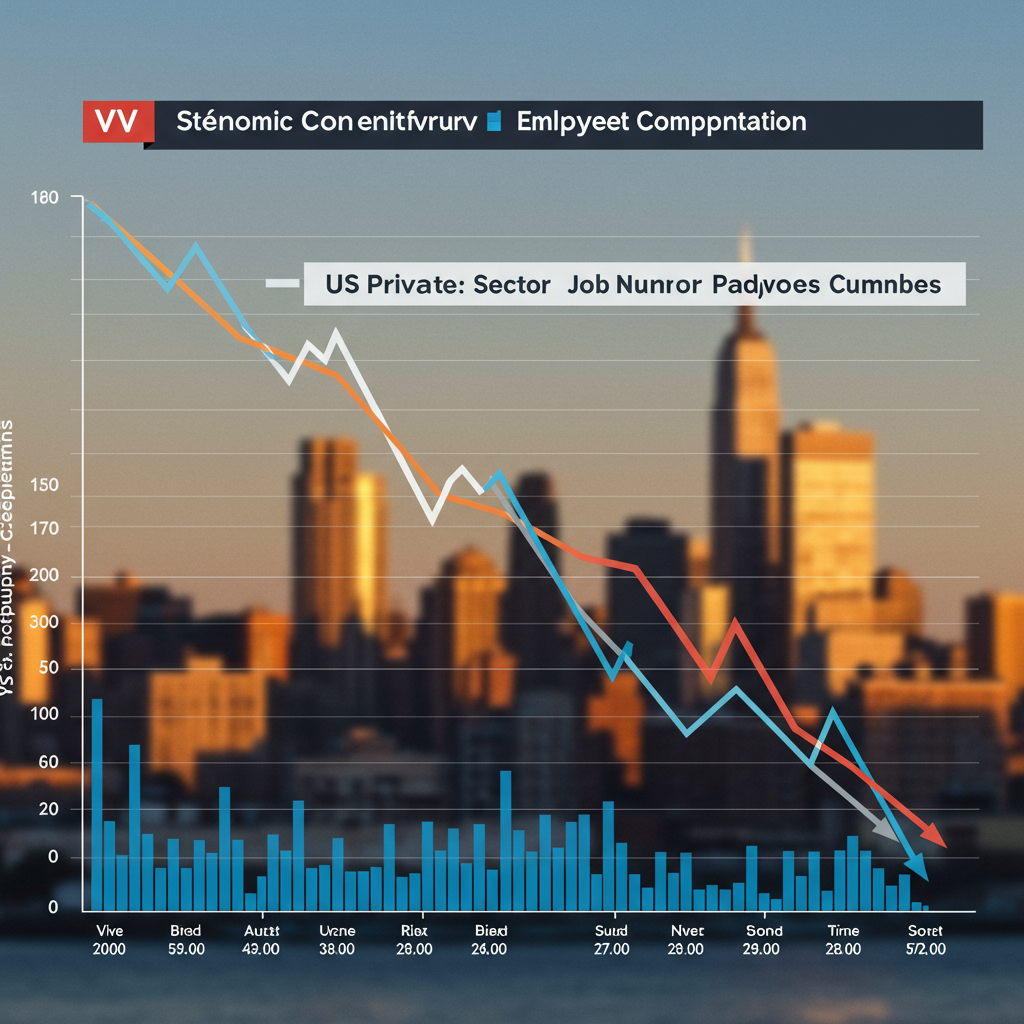The latest look at the American labor market reveals a notable shift. According to the ADP National Employment report for June 2025, private sector employment unexpectedly declined. Businesses shed a total of 33,000 jobs during the month. This marks a significant slowdown compared to recent trends, suggesting a cooling in hiring activity across the United States. While job numbers dipped, annual pay growth for individuals staying in their positions remained steady, holding at 4.4 percent year-over-year.
This report, produced by ADP Research in collaboration with the Stanford Digital Economy Lab, offers a high-frequency snapshot of the private-sector workforce. It’s based on real, anonymized payroll data from over 25 million U.S. employees. The June data indicates a hesitancy among employers to expand their teams. It also points to a reluctance to replace workers who leave. This combination led to overall job losses despite layoffs remaining relatively infrequent.
Key Findings from the June 2025 Jobs Data
The overall decline of 33,000 private sector jobs in June was driven primarily by losses in specific sectors. Service-providing industries saw a net loss of 66,000 positions. This outweighed gains in the goods-producing sector, which added 32,000 jobs.
Examining the breakdown by industry provides a clearer picture:
Major Job Losses:
Professional and business services saw a substantial decrease, shedding 56,000 jobs.
Education and health services also experienced significant declines, losing 52,000 positions.
Financial activities reported a loss of 14,000 jobs.
Notable Job Gains:
Leisure and hospitality continued to add jobs, increasing by 32,000.
Manufacturing added 15,000 workers.
Trade, transportation, and utilities grew by 14,000 jobs.
Construction and natural resources/mining also saw modest gains, adding 9,000 and 8,000 jobs respectively.
This divergence highlights differing conditions across the economy. Service sectors heavily reliant on professional roles or those impacted by staffing challenges faced headwinds. Meanwhile, sectors tied to production and travel continued to see growth.
Employment Changes by Business Size
The June report also details how job numbers changed across businesses of different sizes. This offers insights into which types of companies are driving the employment shifts.
Small Businesses (1-49 employees): This segment saw the largest job losses, shedding a combined 47,000 positions. Firms with 1-19 employees lost 29,000 jobs, while those with 20-49 employees lost 18,000. This suggests smaller enterprises may be facing greater pressure.
Medium Businesses (50-499 employees): Medium-sized firms also experienced a net loss of 15,000 jobs. This was primarily due to losses in the 250-499 employee category (-27,000), which offset gains in the 50-249 employee group (+12,000).
Large Businesses (500+ employees): In contrast to smaller and medium firms, large establishments added 30,000 jobs in June. This indicates that the biggest companies may have more resilience or different hiring strategies in the current environment.
The data on firm size suggests that smaller businesses are disproportionately affected by the cooling labor market. Larger corporations appear more stable in their hiring or perhaps better able to absorb costs associated with retaining staff.
Understanding Pay Growth Trends
Despite the dip in overall employment, the pace of wage increases held steady for a significant portion of the workforce. The report focuses on pay trends for two key groups: job-stayers and job-changers.
Median change in annual pay for individuals who remained at the same job was 4.4 percent in June. This figure is largely unchanged from the 4.5 percent recorded in May. It indicates that while hiring has slowed, companies are generally maintaining pay increases for their existing employees.
For workers who switched jobs, median annual pay growth stood at 6.8 percent. This is a slight decrease from 7.0 percent in May. While still significantly higher than the growth for job-stayers, the marginal dip could reflect the softening demand seen in the overall employment numbers. This might suggest less intense competition for new hires than in previous months.
Pay Increases Across Industries and Firm Sizes
The report also breaks down pay growth for job-stayers by industry and firm size. This detail reveals variations in wage pressures across different parts of the economy.
Looking at key sectors for job-stayers:
Leisure and hospitality saw the highest median pay growth at 4.7 percent, continuing a trend of strong wage gains in this sector.
Financial activities also reported robust pay growth at 5.2 percent.
Manufacturing and construction both showed solid increases around 4.6 percent.
Information (4.1%), Trade/transportation/utilities (4.2%), Professional/business services (4.2%), and Other services (4.2%) saw growth slightly below the national average for job-stayers.
By firm size for job-stayers:
Small firms (1-19 employees) reported the lowest pay growth at just 2.7 percent. This contrasts sharply with larger firms.
Medium firms showed stronger growth (50-249 employees at 4.7%, 250-499 employees at 4.8%).
- Large firms (500+ employees) saw median pay increase by 4.8 percent.
This suggests that while large companies were adding jobs and offering competitive pay increases, small businesses faced challenges on both fronts in June.
Context and Methodology
The ADP National Employment Report is considered a key indicator of the U.S. labor market’s health. Its data is derived directly from ADP’s extensive payroll processing system. This gives it a unique, near real-time perspective based on actual worker data. The report covers over 25 million private-sector employees. Pay insights are based on nearly 14.8 million individual pay change observations monthly.
The report’s findings often precede or align with other major labor market indicators. It provides businesses, economists, and policymakers with valuable insights into hiring trends and wage pressures. The June 2025 data, showing net job losses alongside steady pay gains, presents a complex picture of the current economic landscape. It signals a potential deceleration in the labor market pace observed over the past couple of years.
Frequently Asked Questions
Why did the U.S. private sector lose jobs in June 2025 according to ADP?
The June 2025 ADP report indicated a loss of 33,000 private sector jobs. This decline was attributed to a general hesitancy by employers to hire new staff and a reluctance to replace employees who departed. Job losses were concentrated in service sectors like professional/business services and education/health, outweighing gains in areas like manufacturing and leisure/hospitality.
Where can I find the full details and historical data from the ADP National Employment Report?
The complete ADP National Employment Report, including interactive charts, methodology, and historical data files, is available online. You can typically find this information on the official ADP Employment Report website. The report is made publicly available each month.
What does the June ADP jobs report suggest about the current state of the economy?
The June report suggests a cooling in the labor market. While job losses were modest overall, they mark a shift towards contraction after a period of growth. The combination of declining jobs but stable pay growth for existing employees could indicate businesses are facing uncertainty, perhaps due to economic conditions or inflation. It points to a potentially slowing pace of economic activity as hiring stalls.
Conclusion
The June 2025 ADP National Employment Report paints a picture of a private sector labor market at a crossroads. Net job losses signal a noticeable slowdown in hiring momentum. This is particularly evident in certain service industries and among small businesses. Yet, the continued steady pace of wage increases for job-stayers highlights ongoing competitive pressures to retain talent or manage rising costs. The report provides critical, timely data points for understanding the evolving dynamics shaping the American workforce and the broader economy. Future reports will be essential for tracking whether this dip in employment is a temporary blip or the beginning of a more significant trend.
Word Count Check: 847



